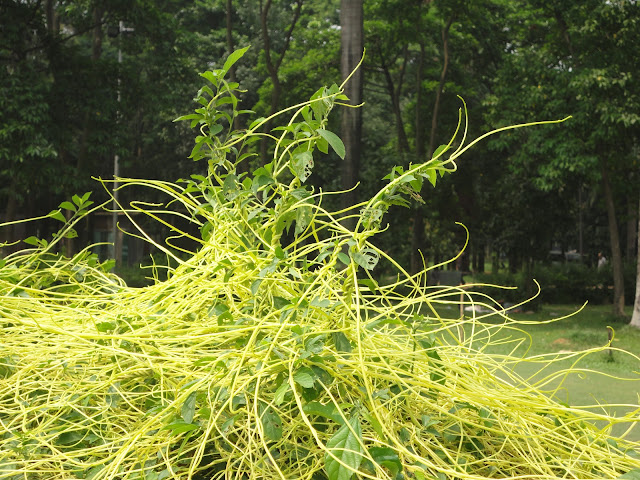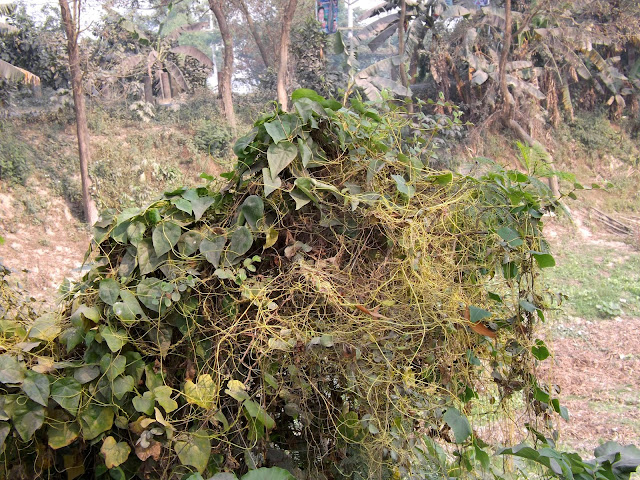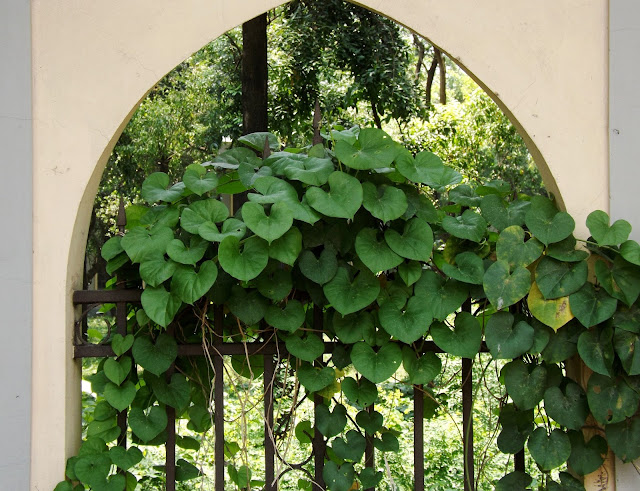Shornolota or Dodder, Cuscuta reflexa
Shornolota or Dodder (Cuscuta reflexa, family: Cuscutaceae) is a golden-colored slender parasitic creeper grown on other trees. It clasps like cobweb, sometimes killing its shelter tree. It has branches. Many people think that it is a leafless plant. But it has leaves, those are scale-like, alternately grow from stem. The plant is well-mentioned in the Bengali literature, specially in medieval Baul poems.
Flowers are small, white and thickly clustered, petals 5. Corolla lobe is short and triangular. flowering period is April-December. Fruit is round capsule.
The juicy stem produces haustorium (a kind of tiny root) that help it to hold the host plant tightly. And with that kind of help sometimes the creeper covers its host plant completely.
Its seeds can be germinated almost throughout the year. The propagation of the perennial plant is caused by seeds and cuttings.
In Indian subcontinent, it has been used as a traditional medicinal plant for thousands of years. Stem and seed are used to remove cough, worm and gas from body. It can also cure jaundice. The parasitic intensive creeper can be seen everywhere in Bangladesh. It has many local names, like Aloklota, Jorbuti, Alkilota, Algushi etc.




Comments
Post a Comment